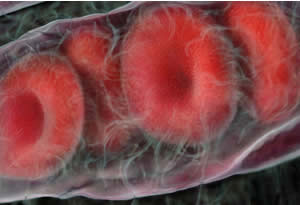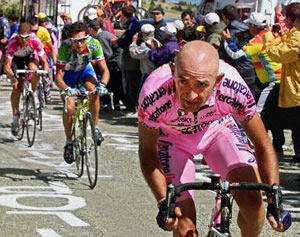Sports Science
Cheating
The desire for better athletes through artificial enhancement goes back many years. Before steroids were banned, a 1972 survey of athletes found that 68% of Olympic athletes used them in one form or another. Drug testing at the Olympics started in 1976 to catch those that used drugs to enhance performance.
As medical technology identifies the molecular basis for biological function, it presents athletes with new ways of enhancing performance, not always legal.
Most of the popular new performance enhancing compounds are identical to natural chemicals found in the body. This makes them difficult to detect. An example of such a drug is EPO or erythropoetin. This drug came into the public forum as the drug of choice for cyclists competing in endurance events.EPO is a genetically engineered version of a natural hormone made by the kidney that stimulates bone marrow to make red blood cells.
Cyclists competing in arduous endurance events, over several days, need huge amounts of oxygen supplied to the muscles. Since red blood cells carry oxygen to the muscles, increasing the number of red blood cells should improve performance.

In the past, cyclists increased the number of red blood cells flowing through their body by a process called "blood doping". This involved removing their own blood, storing it, and then transfusing it back just before a race. This technique has now being replaced by EPO and since this compound is found naturally in the body its detection is all that more difficult. Hence authorities rely on tests to measure the percentage make up of red blood cells in human blood. Now we know that blood is made up of a number of different components some of which are, white blood cells, red blood cells, platelets, proteins and water. A study of top level cyclists, conducted in 1980, found that, on average, the blood cell content was 43%. Hence the limit was placed at 50% and any one found above this limit would be banned for taking EPO.

On June 5, 1999, Pantani, with a cellular content of 52 percent, was ejected from the Giro d'Italia. In a June 11 report in VeloNews, the great cyclist defended his record: "'I am a clean rider,' the 29-year-old Italian told a much-awaited press conference. 'My conscience is clear. I have nothing to do with doping. I am one of the few riders in the world who doesn't have a personal trainer. I don't need doping to win races, I need hill climbs.'
Now whether Pantari is telling the truth or not is unclear as high-altitude training can also increase the red blood cell count. This makes detection of EPO use even more difficult.

Research
Investigate the use of growth hormone(GH) and answer the following questions.
-Is GH a natural hormone found in the body?
-Where in the body is it synthesised?
-How and where in the body does it act?
-Athletes in which sport benefit most from this drug?
-What are the side effects?
Research
What does the term anabolic mean?
-Are anabolic steroids naturally produced in the body?
-Where are anabolic steroids produced?
-How and where in the body do they act?
-What are the side effects?